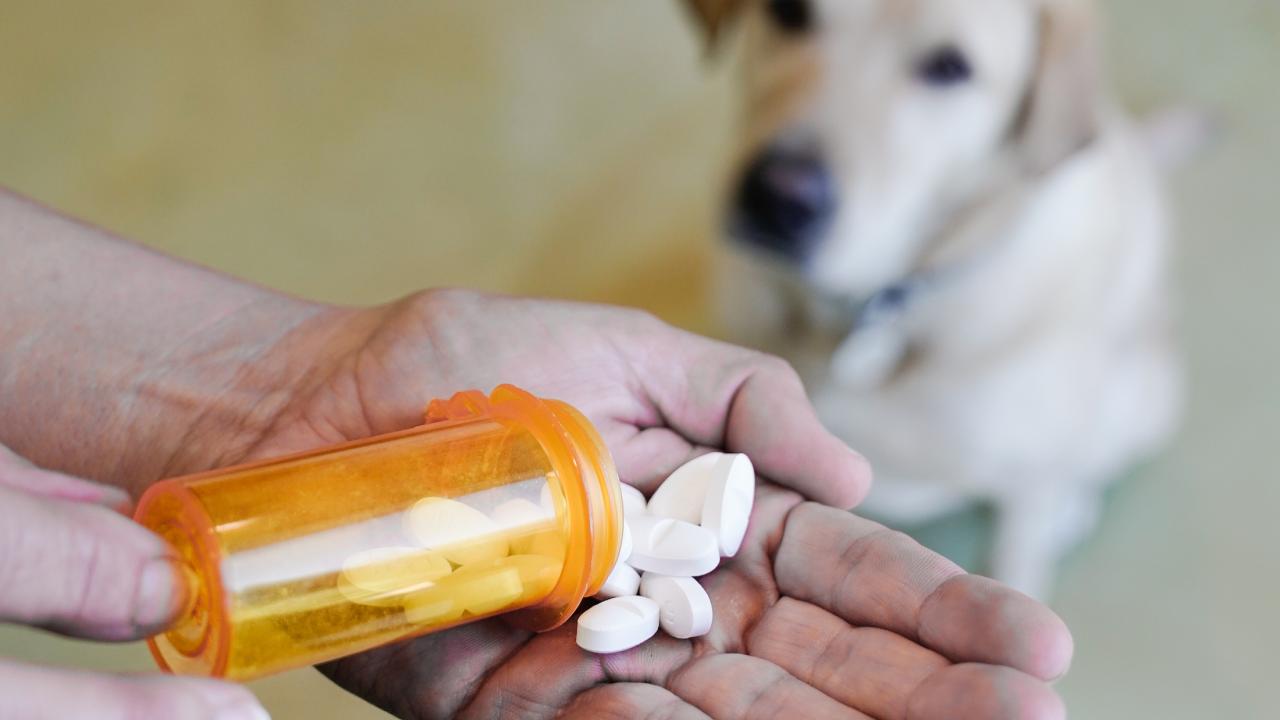
Dangers of Antimicrobial Resistance in Pets
This article appeared in CCAH Update Fall 2023.
Antimicrobial resistance (AMR) has long been identified as a concern in human medicine and has now gained attention as a serious issue in our companion animals. AMR happens when germs like bacteria and fungi develop the ability to defeat drugs designed to kill them.
“Over the past two decades, we’ve seen a rise in antimicrobial resistance in pets,” said Dr. Jane Sykes, professor of small animal internal medicine at UC Davis. “This is concerning because it limits antibiotic options to treat severe infections in these animals. The problem can delay treatment response, require us to use injectable-only drugs, lead to complications post-surgery, and result in longer (and more expensive) hospitalizations.”
In addition, Sykes said, there is discussion regarding possible restrictions on antimicrobial use in companion animals (as occurs in food-producing animals), so in the not-too-distant future, critical antibiotics used in humans might not be available for companion animal care. To avoid such restrictions, judicious antimicrobial use in companion animals by veterinarians is of paramount importance.
Sykes was part of a UC Davis research team who conducted a CCAH-funded study through the school’s extensive electronic medical record system to better understand the rising prevalence of extended-spectrum β-lactamase (ESBL)-producing Enterobacterales.
She explained that these bacteria are of particular concern because they produce enzymes that fight penicillin and critically important beta-lactam drugs used for treatment of resistant infections in humans.
Their study, published in Veterinary Sciences, described the clinical features, antimicrobial susceptibility patterns, and genotypic features of infections associated with ESBL-producing Enterobacterales in dogs and cats that underwent culture and susceptibility testing at the veterinary hospital over the past decade.
Bacterial isolates from those patients were identified using a search of the hospital antimicrobial susceptibility test software database. Researchers reviewed their medical records to determine the source of infection, clinical findings, and antimicrobial susceptibility test information. Thanks to the collaboration and expertise of Professor Bart Weimer’s laboratory, those bacterial isolates were also evaluated for antimicrobial resistance genes with whole genome sequencing.
Thirty ESBL-producing isolates were identified based on phenotypic testing. All but one came from a cat. Urinary tract infections (UTIs) were the most commonly identified clinical problem associated with infection. Additionally, 90% of the samples showed resistance to three or more antimicrobial classes, including classes of antibiotics critical for treating human infections.
“Of those 30 cases, 17 of them were from the final two years covered in the study,” Sykes said. “That’s pretty alarming and shows a rapid rise in cases.”
Other veterinary teaching hospitals on the east coast have experienced even more serious problems, with hospital outbreaks caused by carbepenemase-producing bacteria. These bacteria destroy carbapenem antimicrobials like meropenem, which are sometimes the only options for treating serious infections. Such outbreaks threaten hospital operations, have human health implications due to the potential for zoonotic (animal-to-human) spread, and underscore the need for strict attention to proper infection control processes and judicious antimicrobial use.
“There is an increasing need for full-time infection control/antimicrobial stewardship personnel in large veterinary hospitals to prevent such outbreaks,” Sykes said.
In addition to educating more veterinarians about best practices regarding antibiotic use in suspected UTIs, Sykes pointed out that there are efforts underway to develop more rapid point of care tests (as used in human medicine). She sees a future of diagnostic tests using AI-based computer tools to evaluate whether a sediment stain in a urine sample is indicative of a UTI and requires an antibiotic.
“Many dogs and cats shed bacteria in their urine without having clinical signs of a UTI such as straining to urinate or blood in the urine.” Sykes explained. “These animals usually don’t require antibiotic treatment.”
The study underscores the important warning that veterinarians need to be more vigilant about AMR, use antibiotics wisely and only when indicated. Animal owners also can help by asking their veterinarian if there are alternative treatments when an antimicrobial is prescribed or whether additional diagnostics might help to identify an underlying cause for infection.
Sykes recently presented at the Clinical and Translational Science Award One Health Alliance Translational Summit on Antimicrobial Stewardship and then at the Inaugural Small Animal Antimicrobial Stewardship Workshop for U.S. and Caribbean Veterinary Schools at the University of Minnesota, Minneapolis. These workshops brought human physicians, epidemiologists, public health professionals, pharmacists, academicians, microbiologists, and legislators together to have critical discussions on the path forward to fight AMR.
“There’s an opportunity to do more in terms of stewardship and decrease AMR among companion animals,” Sykes said. “We all have the responsibility for treating this problem.”
Sykes credited Dr. Dennis Woerde - who completed his residency in small animal internal medicine at UC Davis and is now a fellow in urology/nephrology and extracorporeal therapy - for the majority of the heavy lifting on this study. Other researchers who contributed to the study include Drs. Bart Weimer, Krystle Reagan, Barbara Byrne, Steven Epstein, Cory Schlesener, and Bihua Huang.
